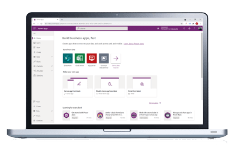At any given time, a single organization can have a complex mix of connected, interrelated and dependent projects occurring at the same time. Then, there are past projects to contend with, as well as those on the horizon.
How can project managers analyze and manage all of these efforts, prioritizing and sequencing them as optimally as possible to meet critical deliverables, optimize performance, and achieve strategic goals and objectives?
The answer lies in project portfolio management, or PPO.
Today, we're taking a closer look at what PPO entails, how your organization can implement, and common pitfalls to avoid along the way. Ready to learn more? Let's get started.
What is Project Portfolio Management?
Especially if your business is still in its infancy stages, it's tempting to tackle as many projects as possible in an effort to boost your bottom line and build your reputation. Yet, unless your project management team has a clear and defined strategy in place to prioritize and sequence those efforts, the opposite outcome can occur.
Project portfolio management is a comprehensive term used to describe the various methods, processes, tools, and strategies used to give direction and focus to your project management efforts over multiple projects. Key PPM stakeholders and decision-makers include your company's:
- Project manager
- Portfolio manager
- Project management office (PMO)
A key component of Project Management Institute (PMI) standards, your PPM strategy describes how your past, current, and future projects tie into your organization's financial, operational, and marketing goals. It takes a close look at how you can best utilize your budget, resources, timelines, and teams to discern which projects are the most valuable, and deliver on them successfully.
Why Should Your Organization Implement a PPM Strategy?
Regardless of whether your company is a fledgling startup or a Fortune 500 enterprise, project prioritization is key. Understandably, businesses want to invest in the projects that will yield the highest returns possible.
However, it can be difficult to tell, at least in the beginning, what that ROI will be. If there's no set strategy in place utilizing strategic objectives, this can lead to companies taking on more risk, liability or costs than they can handle. With PPM, project teams follow specific steps to assess the potential return on each new or proposed project. They can also analyze current and past projects to discern if it's wise to invest even deeper in those efforts.
This set of tools and processes helps organizations identify both the value and the risk of any project. In turn, they're empowered to make clearer decisions based on more accurate project data. What results is a big-picture look at the way all their projects correlate, which helps project teams perform the following tasks to optimize project delivery and financial benefits:
- Allocate and manage resources
- Set clear budgets
- Set and manage interdependencies
- Plan project timelines
- Identify and mitigate risks
- Monitor and control change requests
- Schedule team activities
As a result of this analysis, companies can more wisely optimize their returns by selecting projects that make the best use and allocation of resources and funds. Then, with these important insights in hand, they can then report findings to key internal and external stakeholders, including team members, sponsors, executive managers, auditors, clients and more.
What Should a PPM Strategy Include?
There are five main cornerstones that comprise an effective PPM strategy. Project teams can use these steps to define key performance indicators (KPIs) and make sure each project aligns with their organizational objectives.
Let's take a look at each step in detail.
1. Managing Demand
The first step is to decide how many projects your organization should take on at a given time. Should you take up one or many potential projects?
The answer lies in taking a closer look at your resources. Before accepting new work or expanding existing efforts, project teams should understand the capacities of the following resources:
- Staff members
- Available funds
- Time and availability
At this time, key stakeholders should ask the following questions:
- Do we have the resources in place to accept and deliver on this project?
- Does this project align with our company strategy and PPM strategy?
- Will this project add value to our portfolio?
To expand on the last question, company value extends past simple financials. A project can also be valuable in that it improves your company's reputation, earns you an important new partnership, adds operational efficiency, or improves productivity.
2. Managing Financials
In addition to juggling and managing project demand, stakeholders should also keep a close eye on company financials.
In a PPM strategy, your portfolio manager will work closely with your finance department to ensure that all projects (both current and proposed) are contributing to a balanced budget. For proposed projects, this means taking a close look at the following aspects:
- Estimated costs
- Estimated billing
- Estimated budget
In addition, it's important to also track financials of ongoing projects to make sure they're still contributing to, rather than taking away from, your company's bottom line. Budget-specific metrics to analyze include:
- Total funds available for portfolio efforts
- Percent of project-specific allocation in overall budget
- Percent of budget utilized
- Earned value of each project
- Anticipated future profit or margin percentage
3. Managing Resources
To minimize costs and maximize margin, companies have to be strategic about the way they deploy personnel to work on each project. Assigning on a random, ad-hoc basis depending on sheer availability can result in the wrong mix of talent assigned to each effort. This misstep can wind up costing companies more money than they expected.
Conversely, PPM helps project leaders assign resources to projects in the most effective manner possible.
Each time a new opportunity is identified, leaders can ask the following questions:
- What is our total resource availability?
- Which resources can we deploy?
- When can we deploy them?
- How long can we deploy them?
Business managers can use scenario-based planning to help assemble the best teams possible, procuring or hiring resources as required.
4. Managing Risks
Regardless of the type of projects you have in your funnel at any given time, no organization is completely immune to risks. While this might be true, PPM helps you mitigate or eliminate those risks to the greatest extent possible.
With this strategy, portfolio managers have a clear, unobstructed view of all project risks. This improved transparency and visibility help ensure that no issue slips under the radar. Quicker, real-time access to important data helps them anticipate concerns and address or reposition them before they snowball, improving overall project outcomes.
5. Managing Project Changes
Even the best-laid plans with proper project planning are subject to change at any given minute throughout the project lifecycle.
Stakeholders can submit change requests that affect myriad project categories, requesting adjustments to any of the following parameters:
- Features and functions
- Regulatory framework
- Operating modality
When these changes or revisions are required, unprepared project managers could be thrown off track to an extent that increases costs and damages project outcomes. However, with PPM, they have the tools and techniques on hand to centrally capture the requests, evaluate their impact or benefit, and create a new implementation plan before submitting an approval.
This helps to keep scope creep in place and helps project managers avoid the risk of project failure.
Common PPM Pitfalls to Avoid
While PPM is meant to benefit your project department and organization as a whole, it's possible to misuse the strategy. In addition to adoption recommendations for a project and portfolio management solution, here are five missteps you could take along the way, and how to avoid them
1. Improper Portfolio Governance
Objectives and strategies used to govern individual projects are related to those required to govern project portfolios. However, they are not one and the same.
Failing to establish PPM-specific steps can lead to disaster. This is where project portfolio management software, such as Office 365 PPM, can make a world of difference. Business leaders can use it to create templates, establish PPM procedures, generate reports, visualize timelines, and more.
2. Haphazard Strategic Planning
In your efforts to assign strategy to your project efforts, those strategies shouldn't overlap, challenge, and work against each other. If you're currently applying a haphazard approach to business growth, a PPM strategy isn't enough to rectify the issue.
On the other hand, if your executive management team is devoted to thoughtful strategic planning efforts that benefit your company in both the long-term and short-term, PPM is a natural fit, helping turn those strategies into implementation. First, correct your strategic approach, and then see how PPM fits in it.
3. Failing to Assign Support Personnel
One person can't handle all PPM tasks alone. Rather, it requires a team of dedicated and invested project personnel that span across your enterprise. You might even need to assign or hire new roles to fill certain positions.
In addition to internal resources, there are also plenty of external stakeholders to consider, from coaches and trainers to vendors and software providers. Unless all of these roles are assigned and working in tandem, your PPM approach could suffer.
4. Saying "Yes" Too Much
The success of PPM requires choosing the right projects. To do so, you'll need to identify every opportunity to answer the following questions:
- Can we achieve it?
- Do we have the resources to plan and execute it?
- Do we have the funds available to assign to it without taking away from other projects?
While every opportunity might seem ideal, a prudent project manager knows that saying "No" to the projects that aren't a great match frees up your organization to accept with open arms the ones that are.
5. Lack of Executive Management Involvement
Regardless of how robust your PPM strategy is, you'll need your entire enterprise on your side to propel it. As you seek this support, you might experience initial resistance. Current managers or department heads might not understand how their role fits into the strategy and thus feel as though they're giving up control.
This is where executive management support is key. If those managers back your efforts and commit to them, they set the tone for your entire organization.
PPM Training and Consulting Services
A comprehensive project portfolio management approach can transform your organization, helping you choose and implement projects that help you reach your financial and operational goals, strengthen your competitive stance, and improve your client relationships.
Yet, we understand that this kind of transformation can be a challenge to implement, especially at first.
That's where we come in.
We're dedicated to providing professional business consulting and training services centered on Microsoft solutions. If you're currently using Microsoft Project Online, a PPM strategy is a natural next step with Microsoft PPM. We're well-versed in helping organizations leverage the power of project portfolio management tools to streamline and optimize their project scheduling efforts. We also help create executive dashboards and reports with Microsoft Excel and Power BI.
Contact us today to learn more and let's take this next step together.
Related Links
- Top 10 Benefits of a Project Management Office
- 10 Tips for Successful Program Management
- How to Ensure an Effective Project Team
- Lessons Learned in Project Management
- Resource Analysis in Microsoft Project Online
- Portfolio Analysis with Microsoft Project Online
- The Complete Beginners Guide to Project Portfolio Management
- The Microsoft Project Portfolio Management (PPM) Solution
- Microsoft Project Online and What You Need To Know















